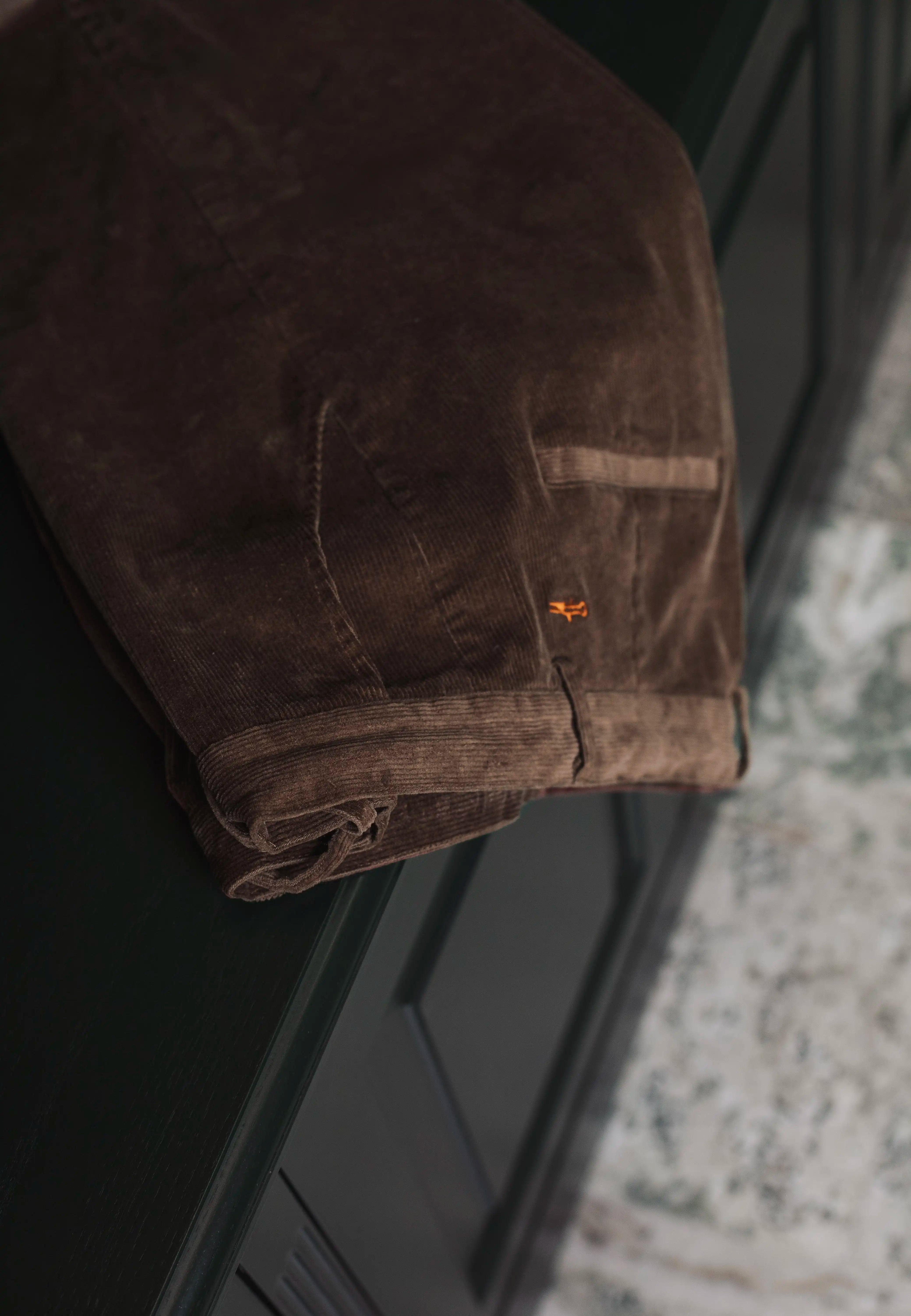Take care of your products the right way
/Care Guide
Proper garment care is key to keeping your clothes looking and feeling their best for longer. By understanding each fabric’s unique needs, from washing and drying to stain removal and storage, you can extend their lifespan, maintain their quality, and reduce unnecessary wear. This guide covers practical tips and tailored advice for every material, so your wardrobe stays fresh, durable, and ready to wear.
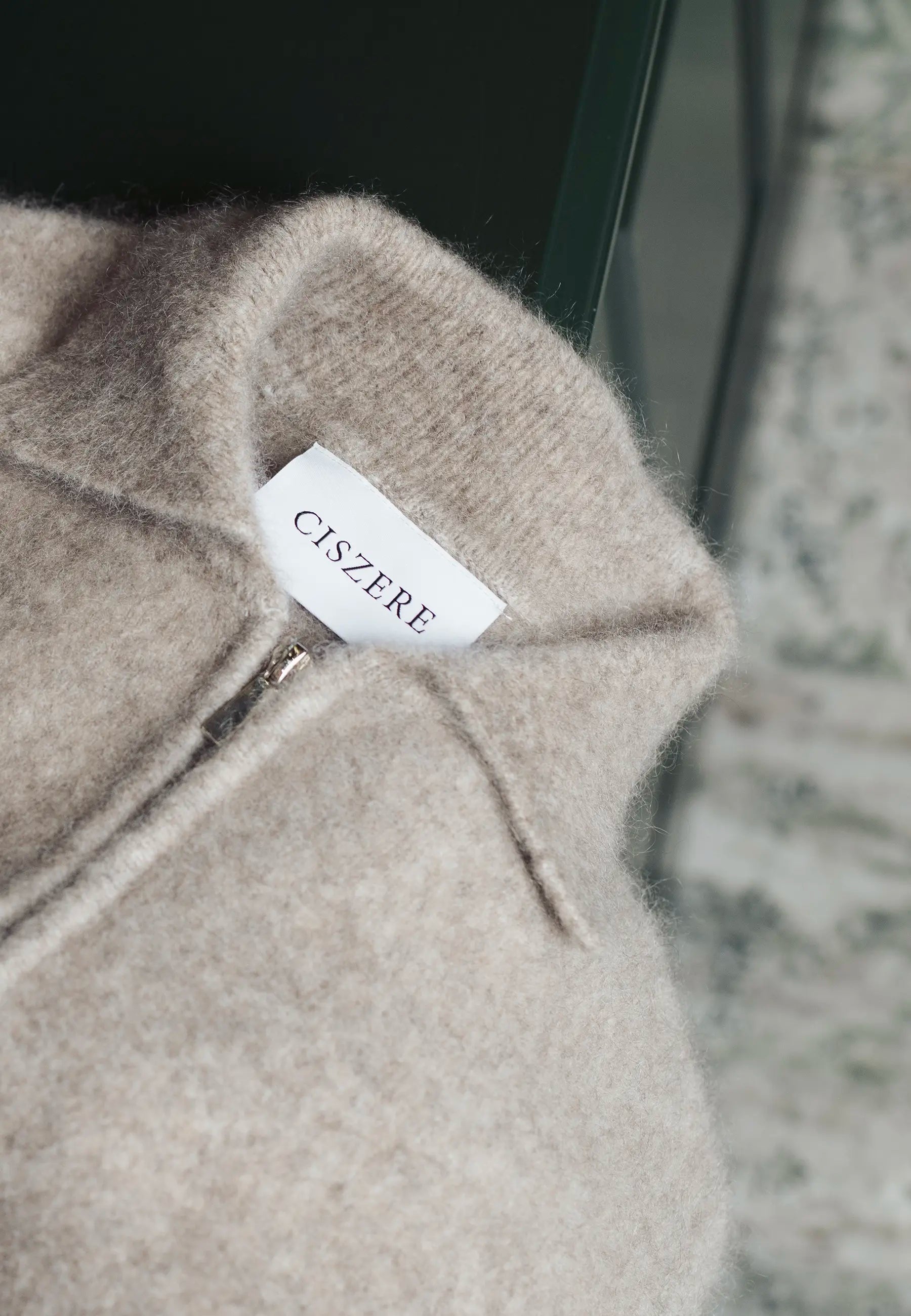
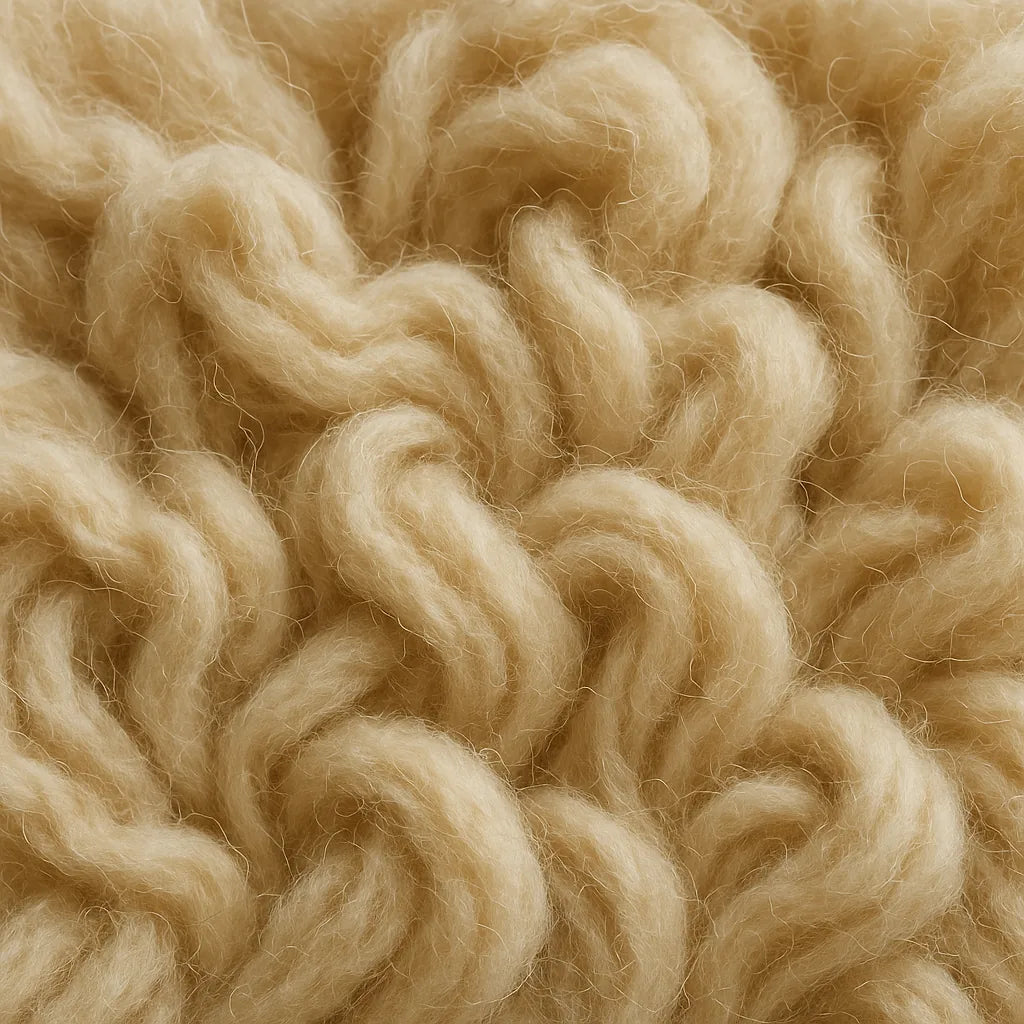
Wool
By taking proper care of your knitted wool garments, you can significantly extend their lifespan while also reducing their environmental impact. Follow our care and washing tips to enjoy your garments for longer.
Air out your wool garments regularly to freshen them up and reduce the need for washing. Always check the care instructions on the garment’s label and use a gentle detergent designed for wool. Hand wash or select your washing machine’s wool program for a delicate clean.
Always use low temperatures, as the combination of heat and movement can cause the wool to shrink and lose its shape.
Do wool garments stain easily?
No, wool garments don’t get dirty easily, but they can stain. If you spill something on your garment, try to remove the stain immediately before it penetrates the fibers, as it will be harder to remove later.
Do you need to use a special detergent for wool?
Yes, many detergents contain harsh enzymes that wool doesn’t tolerate well, which can cause holes in the garment. Always use a detergent made for wool products.
Does wool always have to be hand-washed?
No, some wool garments are recommended for hand washing to protect seams and details, but this doesn’t apply to the wool fabric itself. Wool can be machine-washed, provided you use the wool cycle or a gentle setting on modern washing machines.
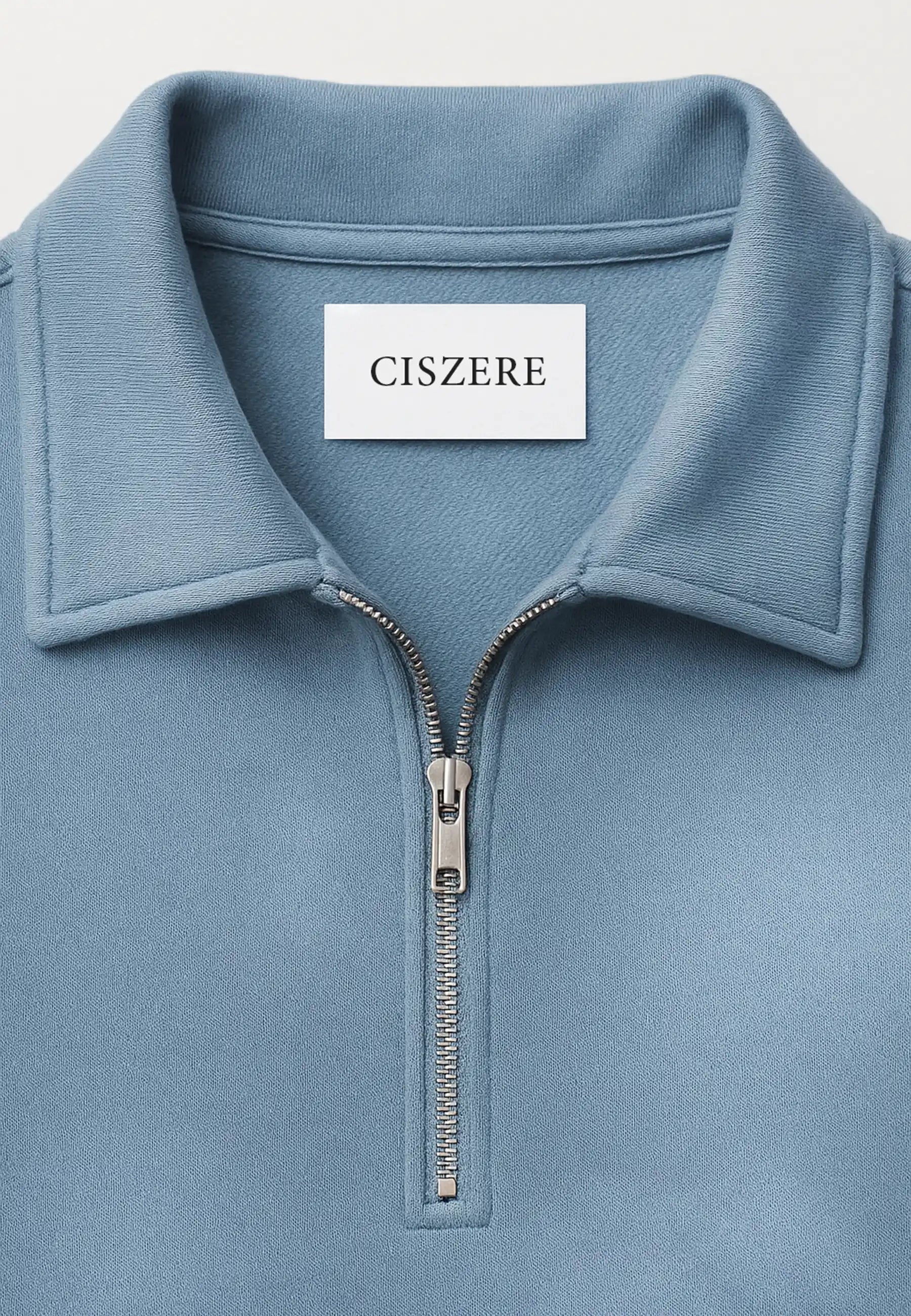
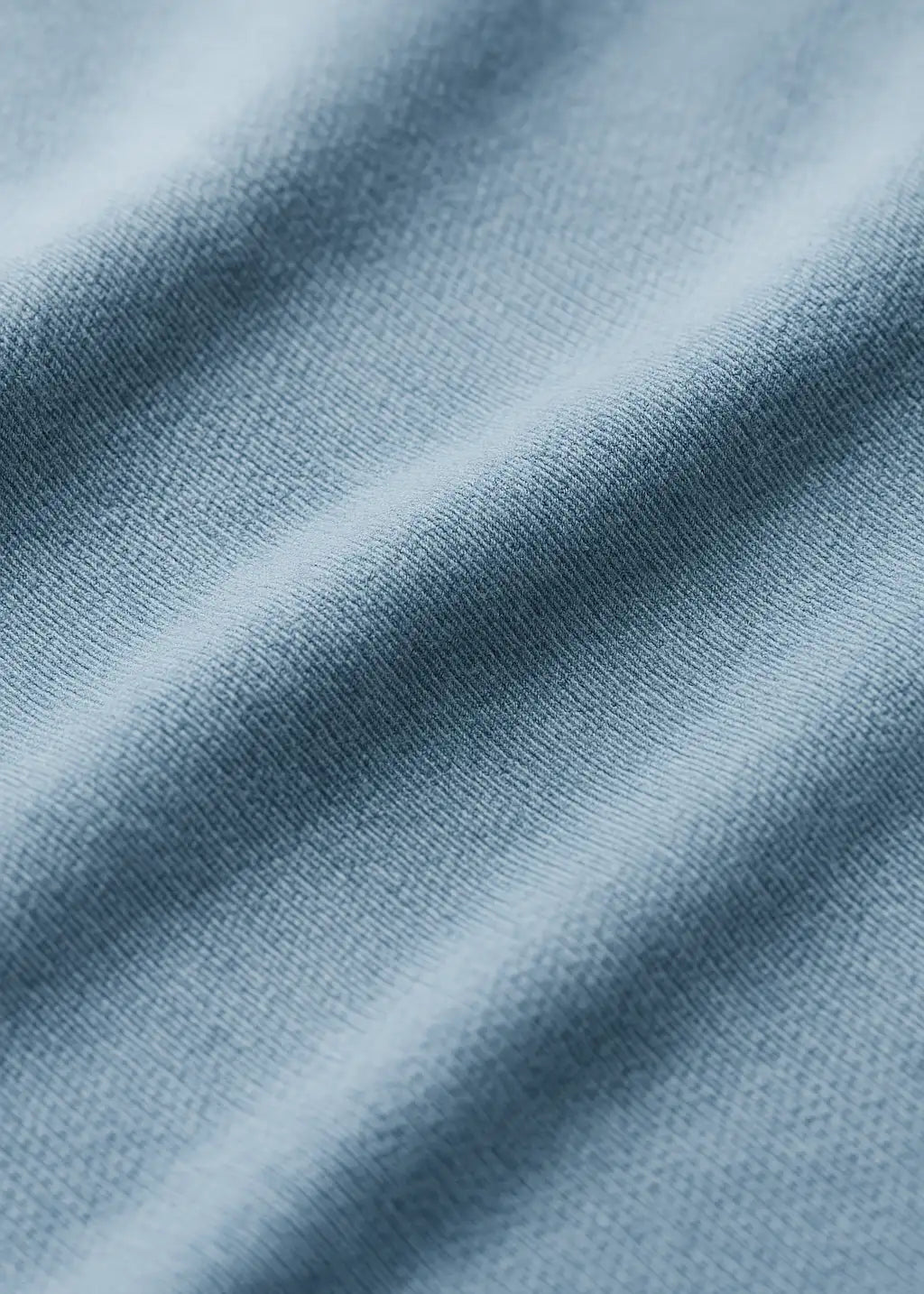
Cotton
Cotton comes from the soft fibers of the cotton plant and is a more manageable material than silk and wool. Thanks to its fiber structure, cotton withstands machine washing, tumble drying, and ironing better than other fabrics.
To keep your cotton garments fresh for longer, use a steamer to smooth out wrinkles and spray them with a fabric spray for a refreshed feel. Use detergent designed for colored clothes, and a separate one for whites to prevent discoloration.
To improve the drying process and reduce static electricity, place wool dryer balls in the tumble dryer. This reduces both drying time and wear on the garment, while keeping it soft and fresh.
What temperature should I wash cotton garments at?
Cotton garments are best washed at 30–40°C to preserve color and shape. Higher temperatures can cause shrinking and fading, while 60°C can be used for white garments when removing stains.
Should I use fabric softener?
Yes and no — it can make cotton a bit softer, but it also wears down the garment. Use fabric softener sparingly to make your clothes last longer.
What should I do if my cotton garment gets stained?
Try to treat the stain immediately with a stain remover before washing.
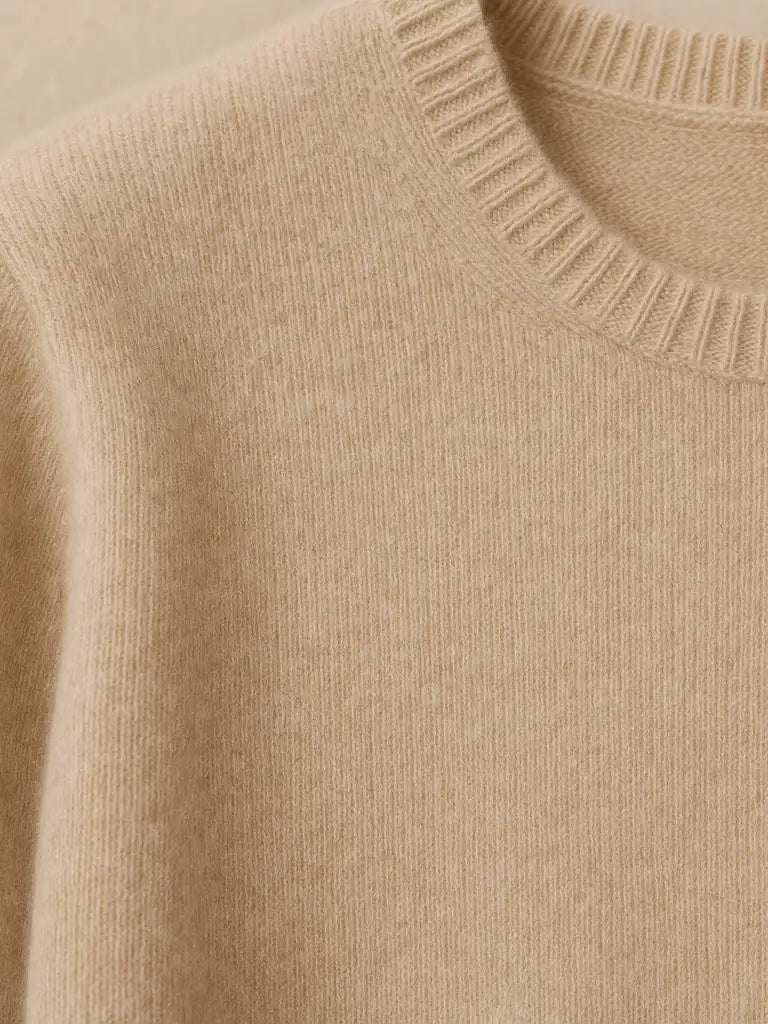
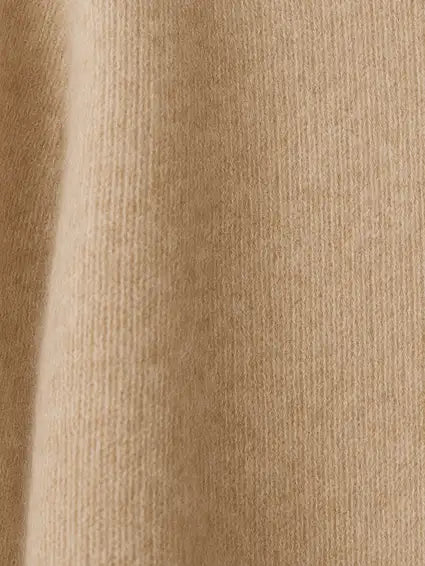
Cashmere
Cashmere is an exclusive type of wool sourced from the soft winter undercoat of a special breed of goat. Since these goats shed their coat only once a year, cashmere is a rare and luxurious material. It is also self-cleaning, meaning it doesn’t need to be washed as often.
Air out your cashmere garments regularly to reduce the need for washing. Always check the care instructions on the garment’s label and use a gentle detergent designed for wool. Hand wash or select your machine’s wool cycle for a delicate clean.
Always use low temperatures, as the combination of heat and movement can cause the wool to shrink and lose its shape.
Tips for Protecting Your Garments from Moths and Carpet Beetles
Store your cashmere garments in cotton bags to protect them from pests. Use cedarwood oil or place cedar blocks where you store them, as moths and carpet beetles avoid the strong scent of cedar. Wash your garments regularly, as dirty or odorous cashmere is more likely to attract pests.
How to Remove Pills from the Garment
The best way to keep your cashmere in top condition is to invest in a fabric shaver, which gently removes pills in no time. Start by lightly gliding the shaver over the garment, then gradually increase the pressure. This will restore the garment to its original look.
Should Cashmere Be Hung or Folded?
Fold your garments — they prefer to rest folded in a drawer. Avoid hanging them on a hanger, as this strains the shoulders and can cause the garment to lose its shape prematurely.
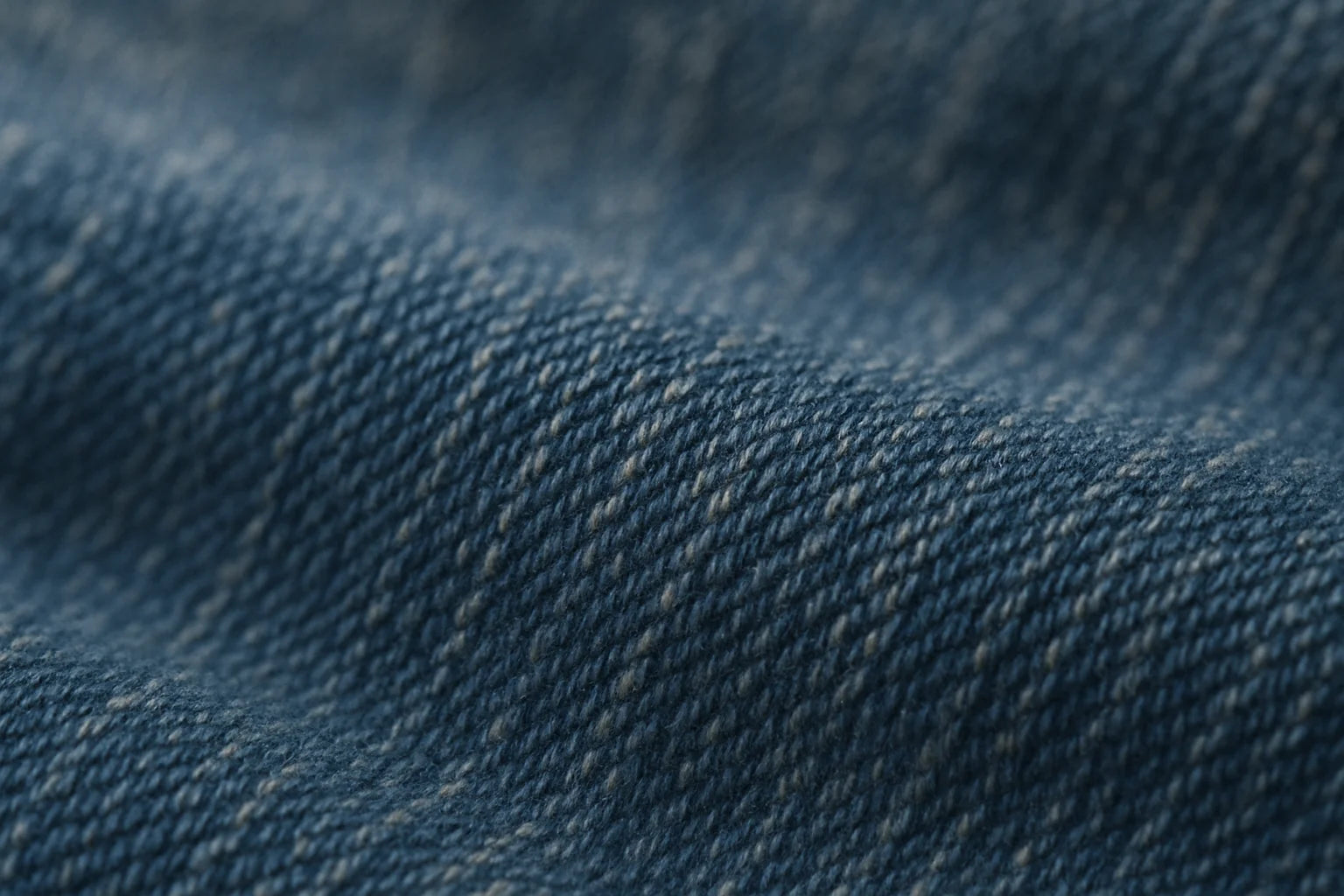
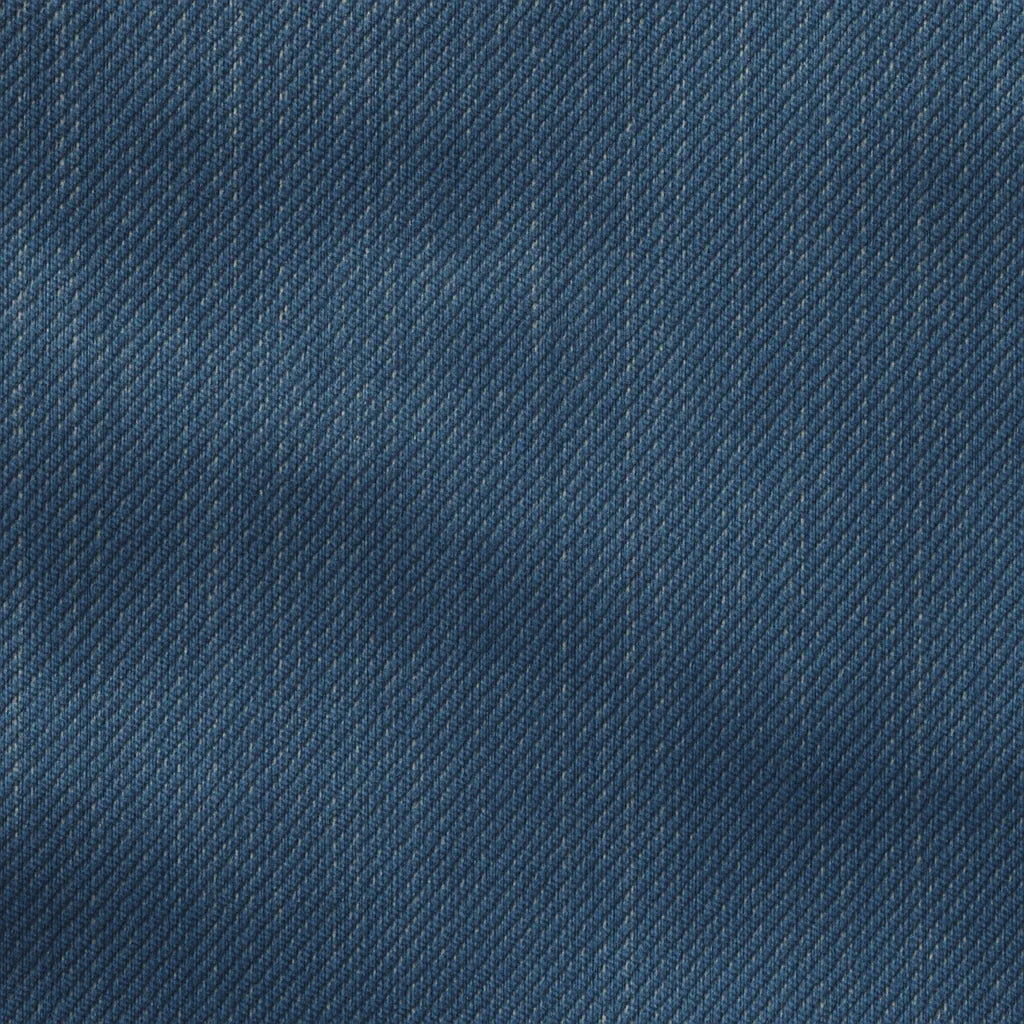
Denim
Denim, or jean fabric, is a woven twill fabric most often made from cotton. To preserve both fit and color, jeans should be washed as rarely as possible — ideally waiting several months between washes.
Air out your jeans regularly, and use a steamer and fabric spray to freshen them up and remove unwanted odors. Steaming can also help restore their shape. If washing is necessary, turn the jeans inside out and use a gentle cycle or hand wash at low temperatures. Hang or lay them flat to dry, and avoid the tumble dryer to preserve fit and quality.
How often should you wash jeans?
Wash your jeans as rarely as possible — only when they are truly dirty or start to smell. For many people, washing every 10–15 wears is enough.
Should you use fabric softener?
No, it damages the fibers in denim, so it’s better to wash them with detergent only.
What temperature should you machine wash jeans at?
To minimize fading, choose a gentle cycle and wash at a maximum of 30°C.
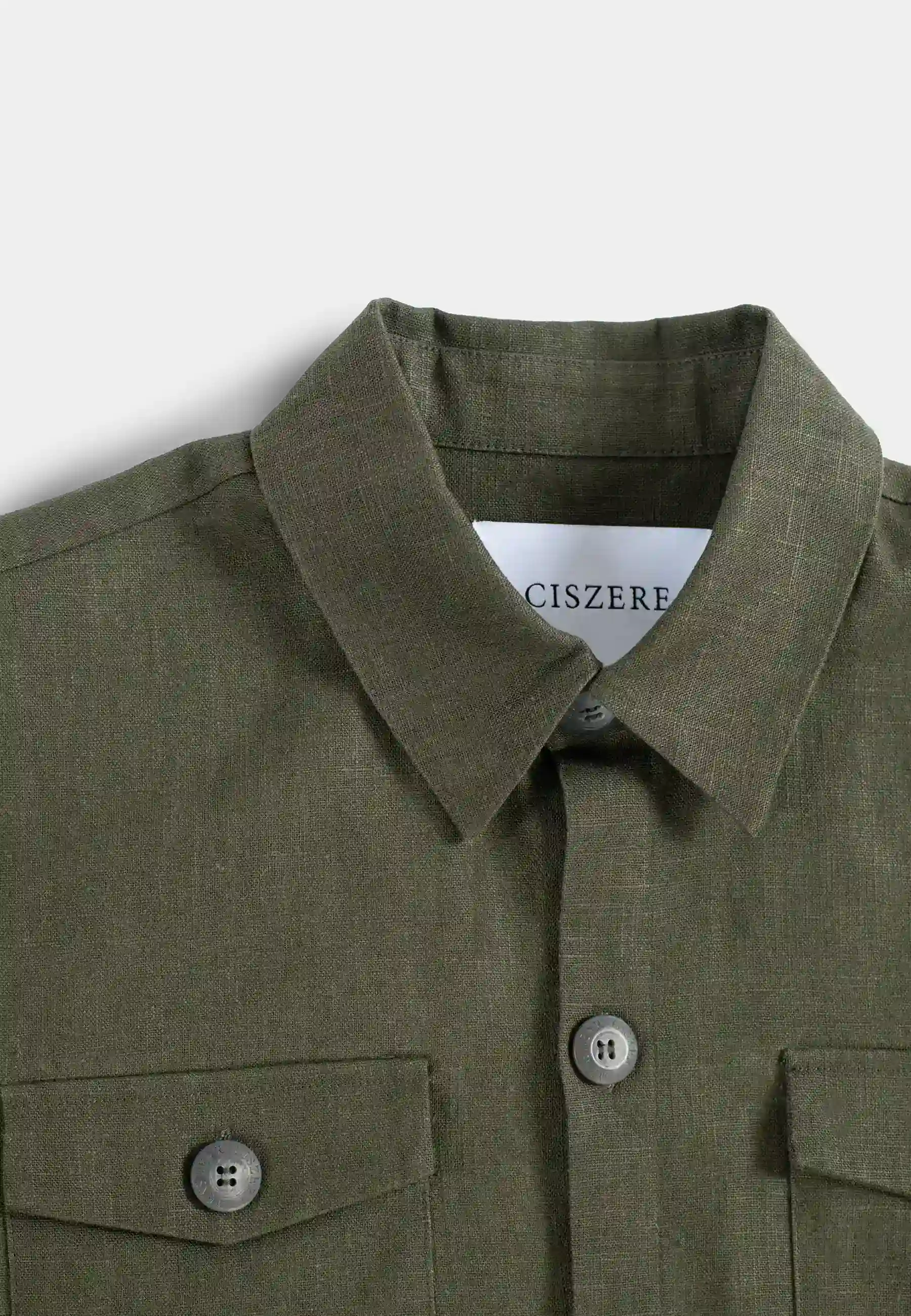
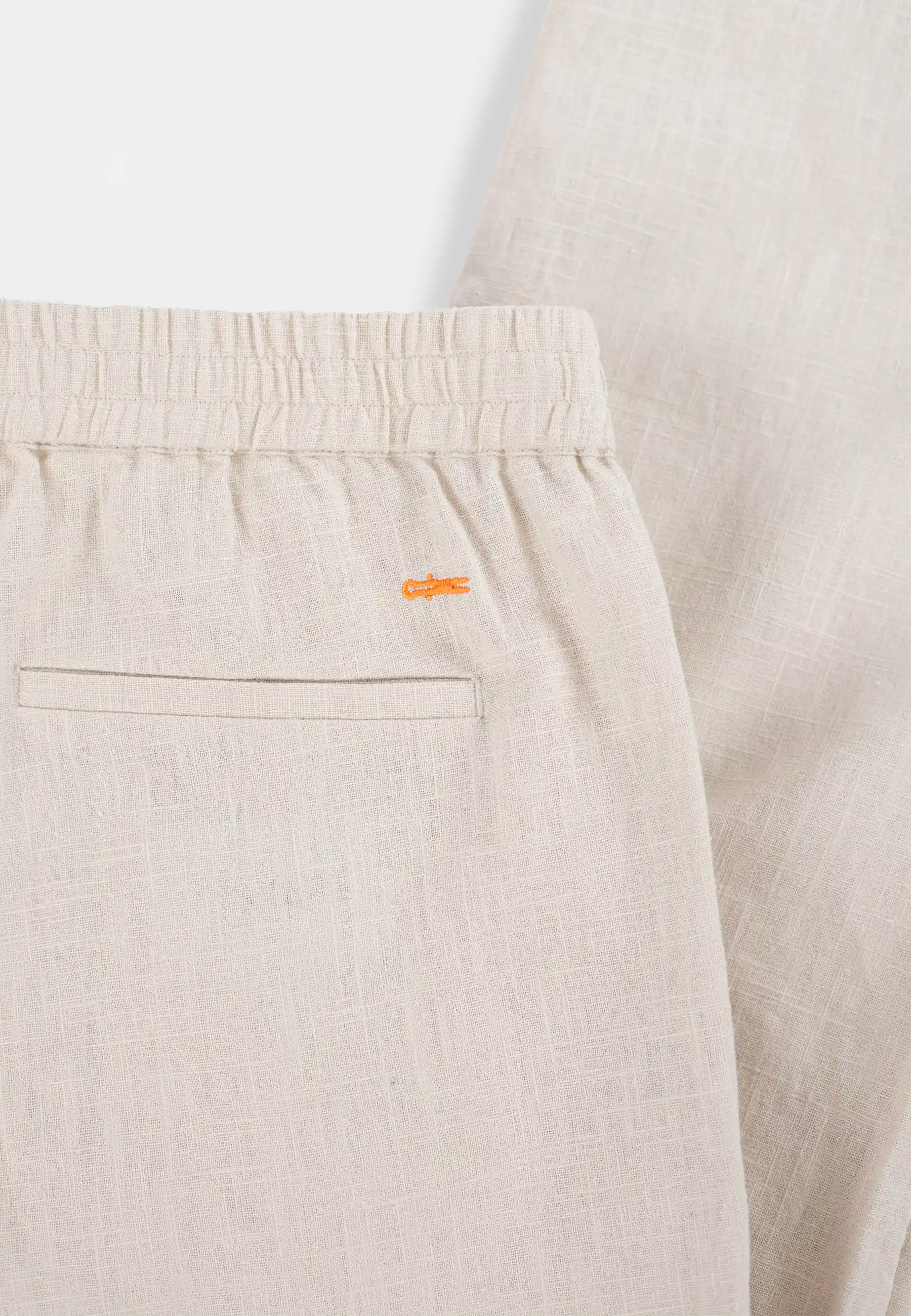
Linen
Linen is made from flax fibers and is naturally antibacterial and stain-resistant, which reduces the need for washing. Linen garments also come clean even when washed at low temperatures.
Button all buttons and close all zippers before washing to protect the garment. Wash with similar colors to avoid color transfer. You can also soak linen garments before washing to reduce wear. Hang dry instead of tumble drying, as heat can cause shrinkage. Iron or steam when the garment is slightly damp to remove wrinkles. Avoid folding along the same lines to prevent permanent creases.
Do linen garments shrink in the wash?
Yes, during the first wash linen usually shrinks by 5–10% if it hasn’t been pre-washed. However, the fabric will also stretch with wear, so don’t buy a size that’s too large.
What temperature should linen be washed at?
It’s best to wash linen at low temperatures, as dirt releases easily from the fabric. For example, bed linen and towels can be washed at 60°C, but clothing is best washed at 30°C to preserve the fabric’s sheen.
Is linen antibacterial?
Yes, linen fabrics breathe and wick away moisture, creating an environment where bacteria don’t thrive, making them resistant to odors.
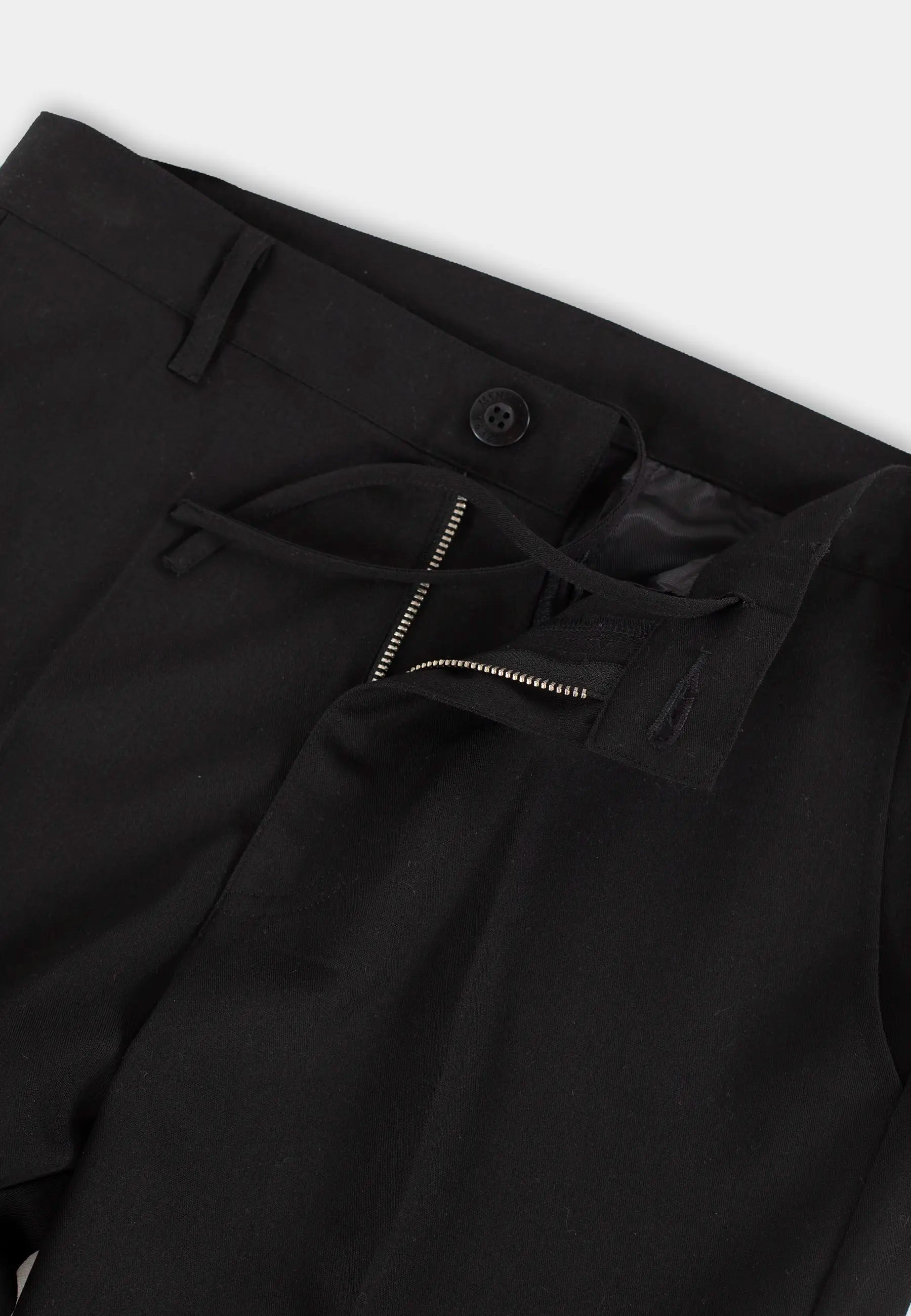
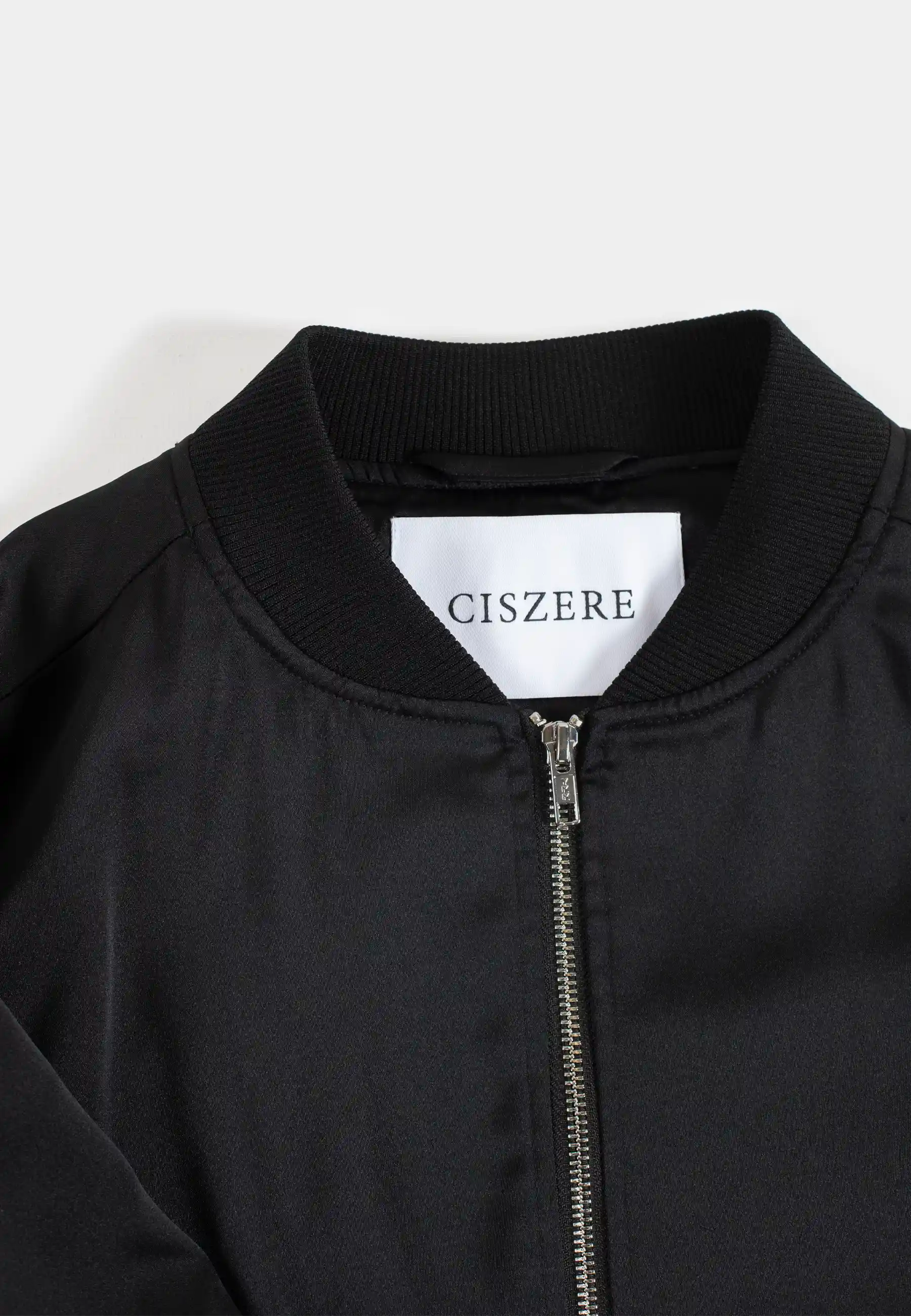
Polyester & Nylon
Polyester is a low-maintenance and durable material found in many garments. Thanks to its long fibers, polyester holds its shape well, wrinkles minimally, and rarely shrinks.
Nylon is a synthetic material made from polyamide fibers. It is durable, lightweight, and flexible, making it popular in sportswear, swimwear, and outerwear. Nylon is also water-repellent and quick-drying, making it well-suited for use in damp environments.
Choose a gentle wash cycle and use a detergent specifically designed for performance wear. To further extend the garment’s lifespan, you can hand wash it. Hang dry your nylon garments, as they dry quickly and do not need to be tumble dried.
**What temperature should polyester garments be washed at?**
Wash polyester at a low temperature and use a gentle cycle to preserve its quality. Avoid tumble drying to prevent damage to the fabric. It should not be washed above 40°C.
**Can polyester garments shrink in the wash?**
They rarely shrink, but if washed at too high a temperature or dried in a tumble dryer, they can shrink.
**Can I wash polyester with other materials?**
Yes, polyester garments can be washed with other materials, but to avoid color transfer, separate light and dark clothes.
How do I remove stains from nylon garments?
Treat the area with stain remover before washing. If the stain is stubborn, try hand washing.
How often do I need to wash my nylon garments?
They don’t need to be washed often, especially if they aren’t dirty or smelly. Airing and spot cleaning are often enough to keep them fresh between washes.
Can nylon garments shrink when washed?
Nylon doesn’t shrink as easily as other materials, but it’s important to always follow the care instructions to prevent the garment from changing shape.
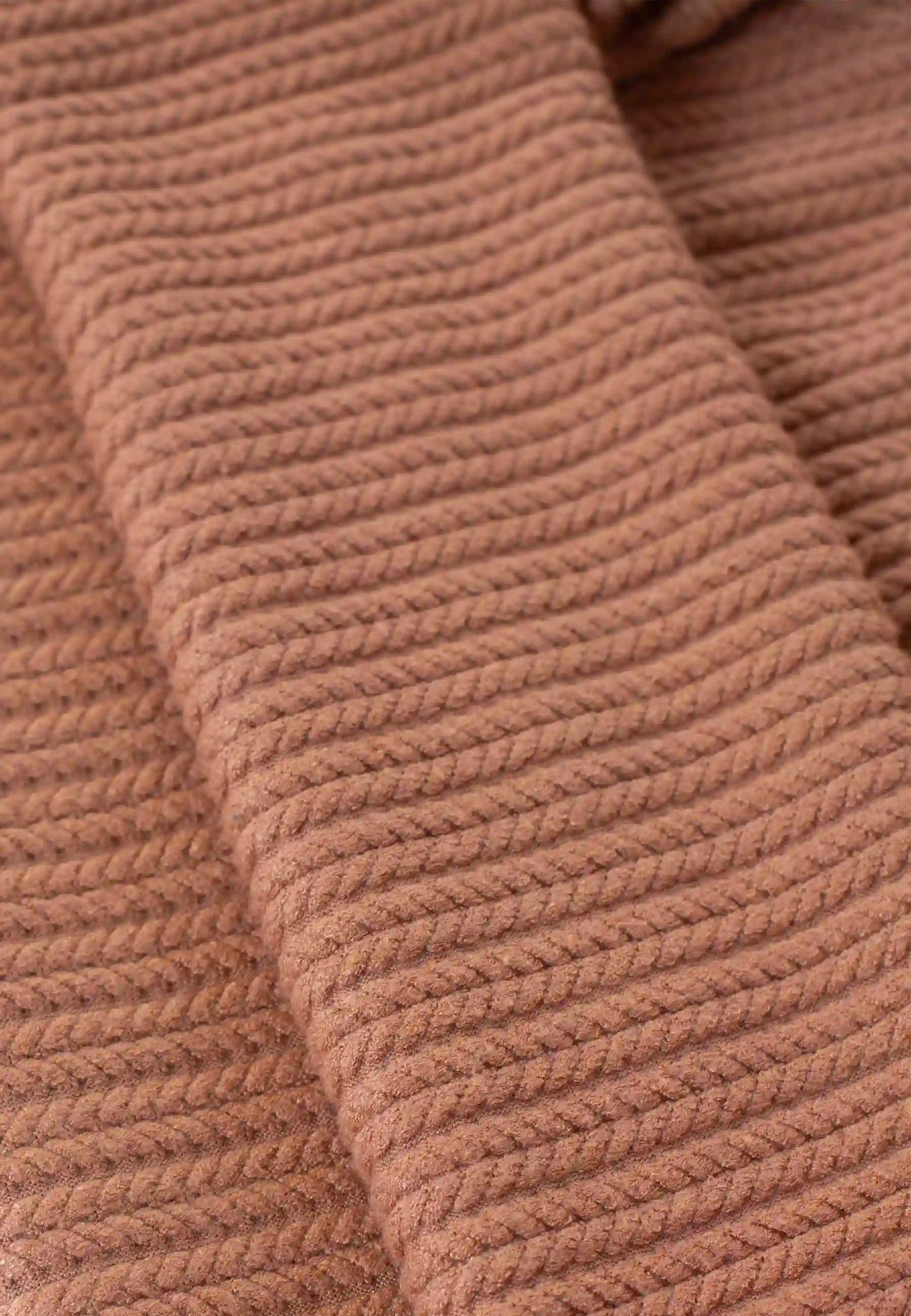
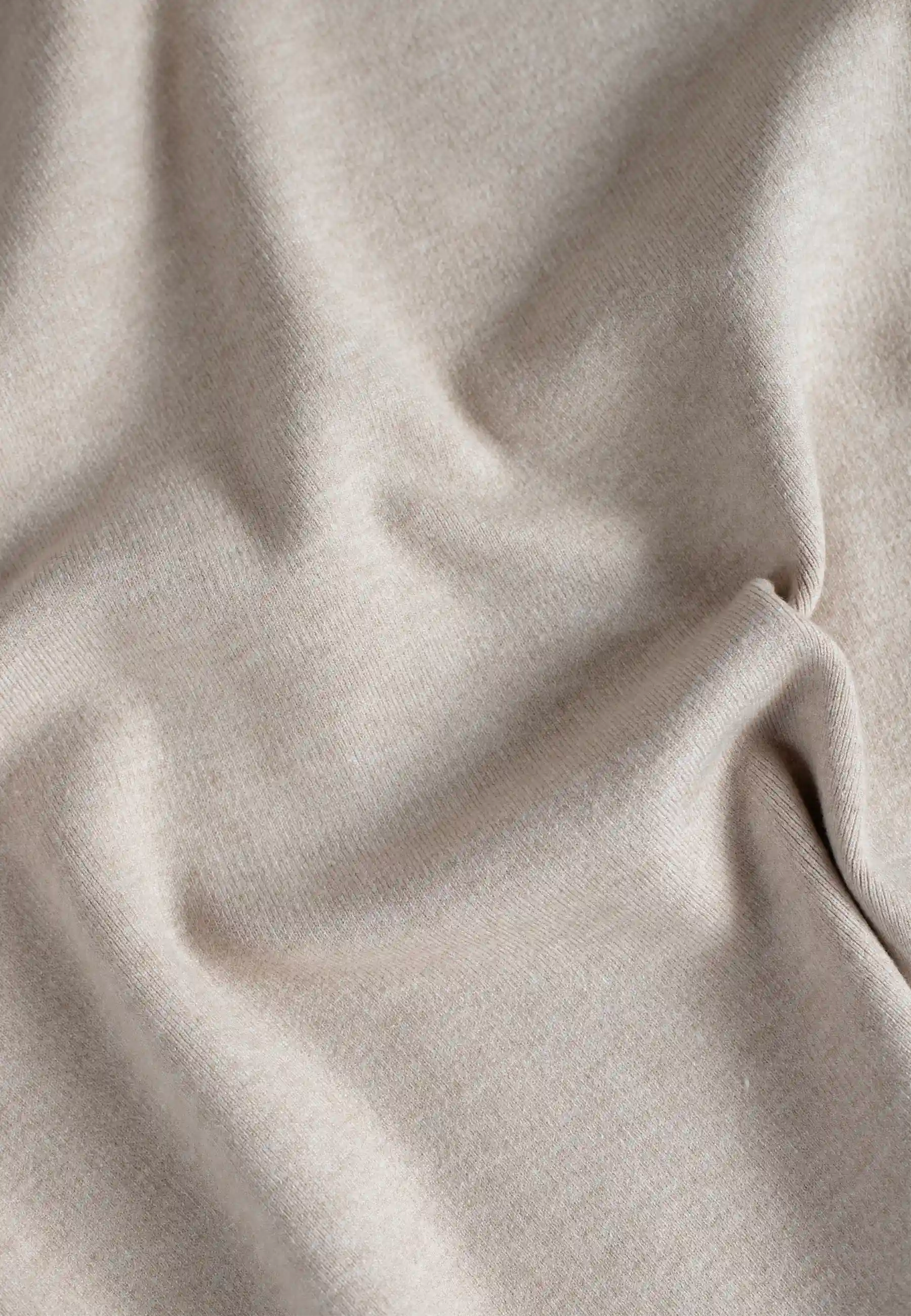
Viscose
Viscose is a soft and breathable material made from wood pulp. Similar to rayon and lyocell, it has a tendency to stretch but will return to its original shape when steamed or washed.
Wash your viscose garments gently at a low temperature to prevent shrinkage. Always sort clothes by color and hang them to dry. If the garments shrink in the wash, you can use a steamer to restore the fabric to its original shape. To freshen up the garment between washes, use a fabric spray.
Can you use fabric softener when washing viscose garments?
It’s best to avoid fabric softener, as it can affect the fabric’s structure and absorbency.
How do you best remove stains from viscose garments?
Gently dab with a damp cloth and a little mild detergent. Do not rub the stain, as the fabric is delicate and can lose its shape.
Can you tumble dry viscose garments?
Never tumble dry viscose — the heat and friction in the dryer can cause it to shrink and wrinkle. Always air dry the garments.
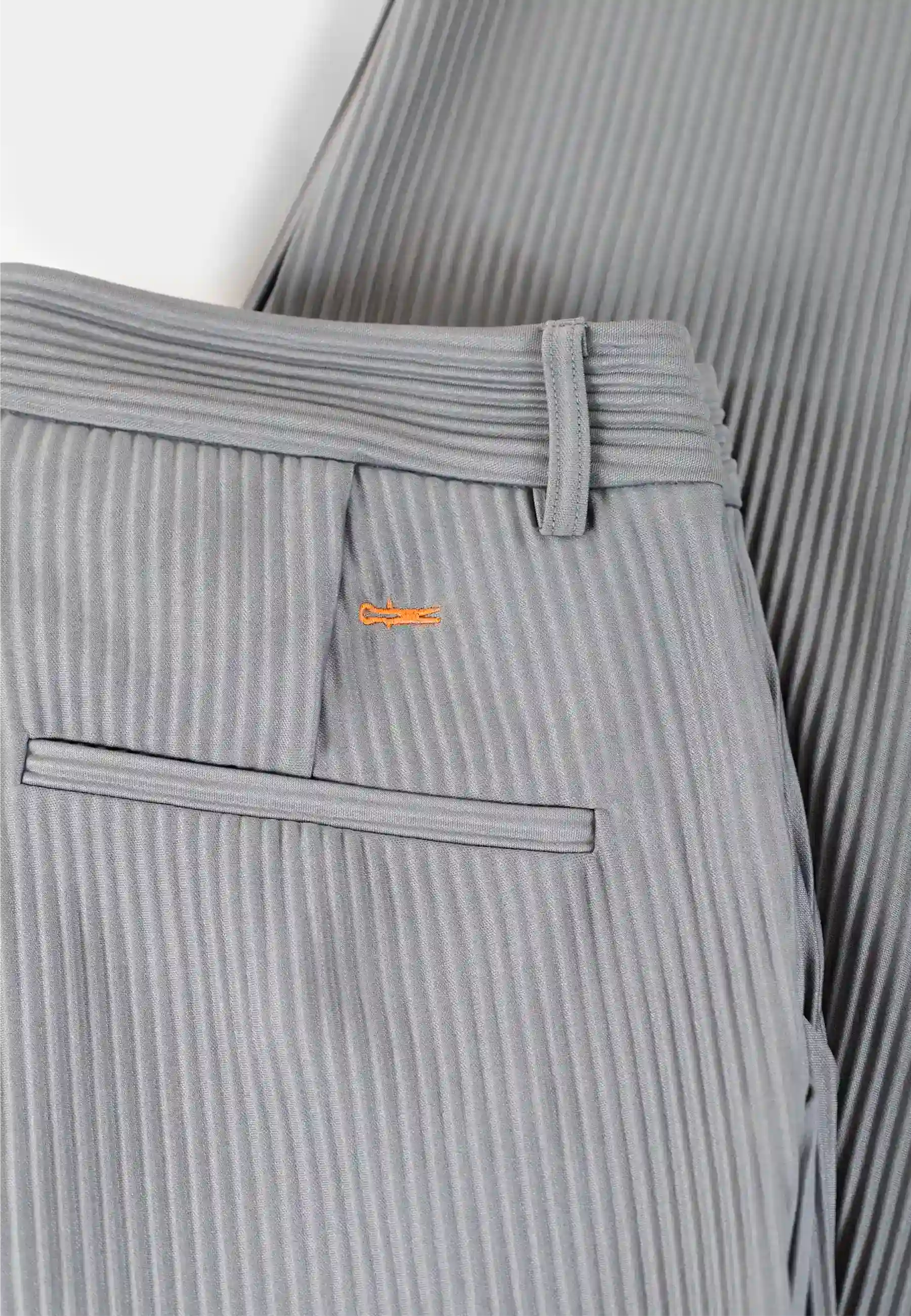
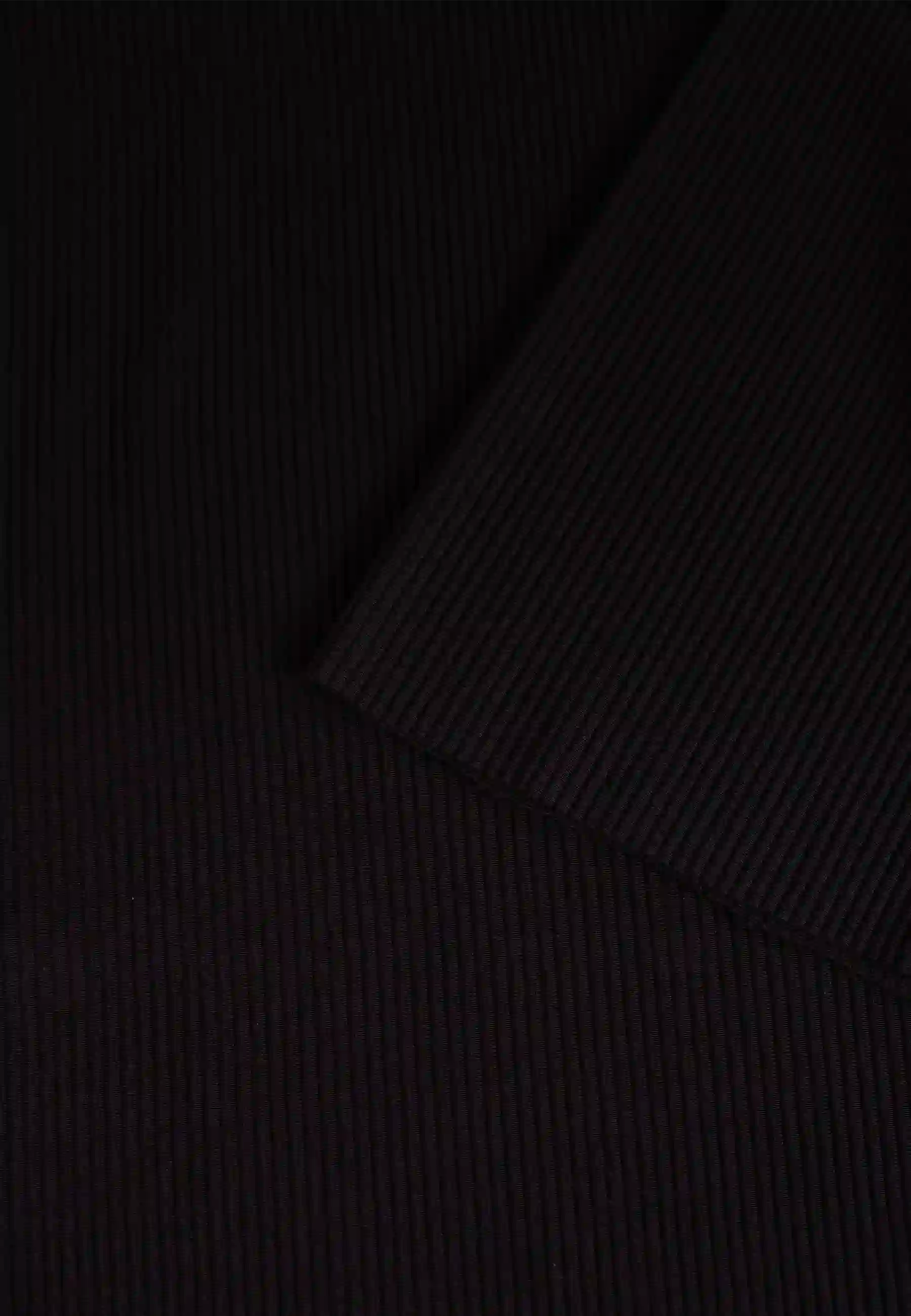
Blended Fabrics
Blended fabrics in clothing combine different materials to enhance comfort, durability, and performance. By mixing natural and synthetic fibers, it’s possible to create garments that are soft, long-lasting, and easy to care for.
If a garment is made from a blend of different textile fibers, you should always follow the care instructions on the garment. Otherwise, follow the care guidance for the fiber that makes up the largest percentage according to the material label. For example, if a garment is made of 70% cotton and 30% viscose, you should follow the care instructions for cotton.
However, be cautious with delicate fibers such as silk or wool in blended fabrics. Even if the silk content is low, it’s best to use a gentle detergent to preserve the garment’s quality. As with all garments, if you’re unsure how to wash it, always follow the instructions on the care label.
What should I do if a garment contains both delicate and durable fibers?
Use a gentle detergent to protect the delicate fibers and wash on a gentle cycle. If you’re still unsure, hand wash the garment.
Is it safe to machine wash blended fabrics?
It depends on the fiber composition. If the garment contains delicate fibers, use a gentle cycle or hand wash. For synthetic blends, you can use a regular wash cycle.
What temperature should synthetic blends be washed at in the machine?
It’s recommended to wash at low to medium temperatures, around 30–40°C. This helps prevent synthetic fibers like polyester, nylon, or acrylic from being damaged by high heat or from beginning to melt.
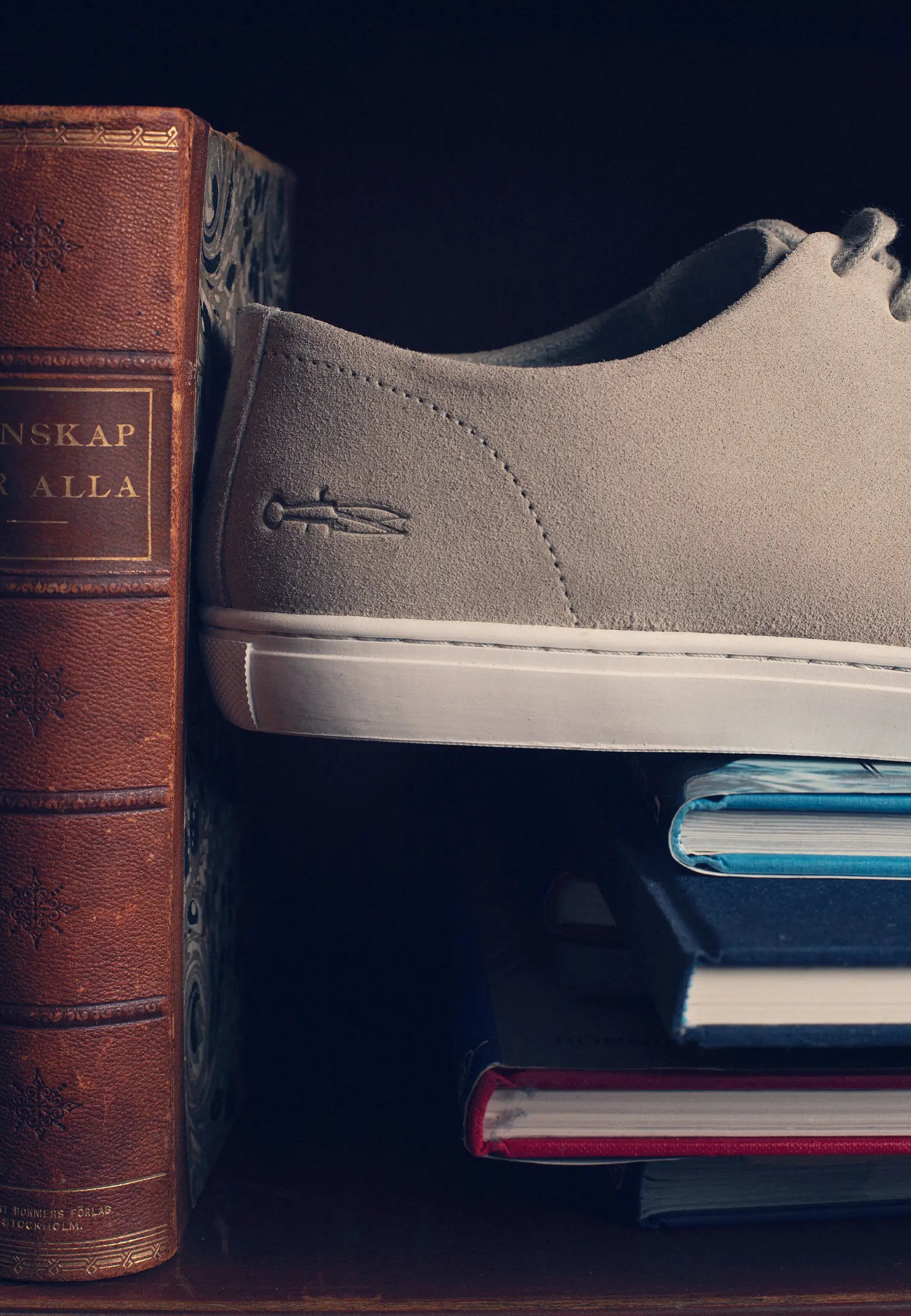

Suede & Leather
Suede is a type of leather with a soft, napped surface made from the underside of animal hide. Suede is a delicate material, and it’s important to care for it properly to extend its lifespan.
Leather is a collective term for various types of hides and skins. It ages beautifully over time, developing a unique patina. With its natural flexibility, breathability, and high resistance to wear, leather is both durable and timeless.
Suede is a delicate material that requires care to maintain its softness and appearance. Brush regularly with a suede brush in the same direction. Small stains can be removed with a suede eraser or a regular eraser. Allow mud stains to dry completely before brushing them off. For stubborn stains, use a slightly damp cloth and a suede eraser. If needed, clean with a special suede cleaner according to the instructions.
Leather products require regular maintenance to preserve both their appearance and durability. Wipe your leather item regularly with a soft, damp cloth after use to keep it free from dust. Remove dirt, salt, and other harmful substances immediately to avoid damage. Recondition the leather using a leather balm, and occasionally polish it to restore its extra shine. For stubborn stains or deep cleaning, it is recommended to take the item to a professional cleaner with expertise in leather care.
How can you prevent leather products from cracking or drying out?
To prevent leather from cracking or drying out, regularly apply leather balm or leather cream. This helps rehydrate the leather and maintain its suppleness.
What should you do if a leather product gets wet?
If your leather product gets wet, wipe it with a soft, clean cloth and let it air dry in a cool, dry environment. Avoid using heat sources, such as a hairdryer, to speed up drying, as this can damage the leather.
How can you protect leather products from staining?
To protect leather items from stains, treat them with a leather protector that creates a water-repellent surface. It’s also important to avoid exposing the leather to grease, oil, or other liquids, and to clean any stains immediately when they occur.
What should I do if my suede shoes get wet?
Dry them at room temperature with newspaper stuffed inside to help maintain their shape. Avoid direct heat, as it can make the suede stiff.
How can I protect suede from dirt and moisture?
Use a waterproofing spray designed for suede to create a protective layer. Repeat the treatment regularly for the best results.
What is the best way to store suede products?
Store suede items in a dry, well-ventilated place, preferably in a fabric bag to protect them from dust. Avoid plastic bags, as suede needs to breathe. Use shoe trees in suede shoes to help maintain their shape.
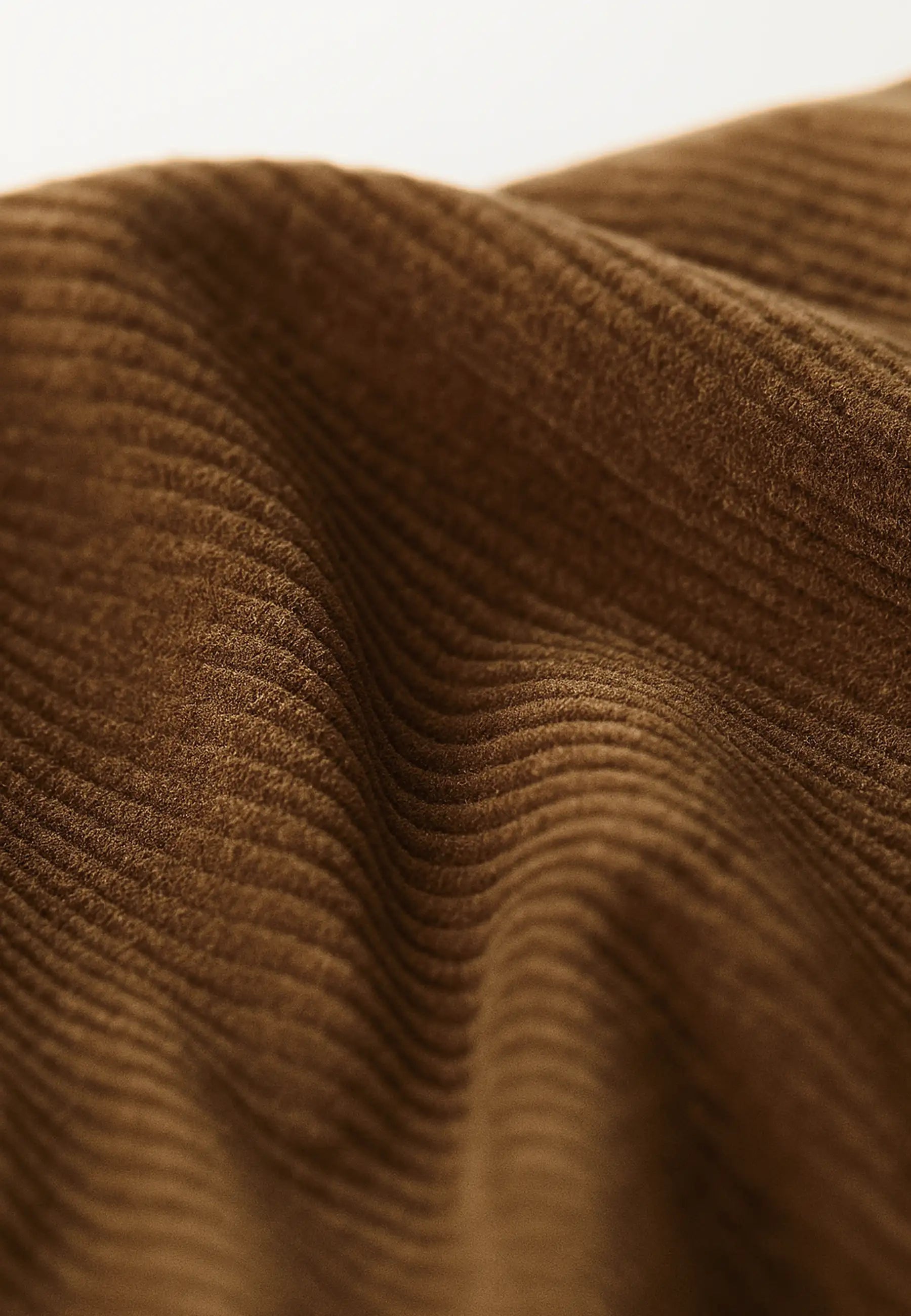
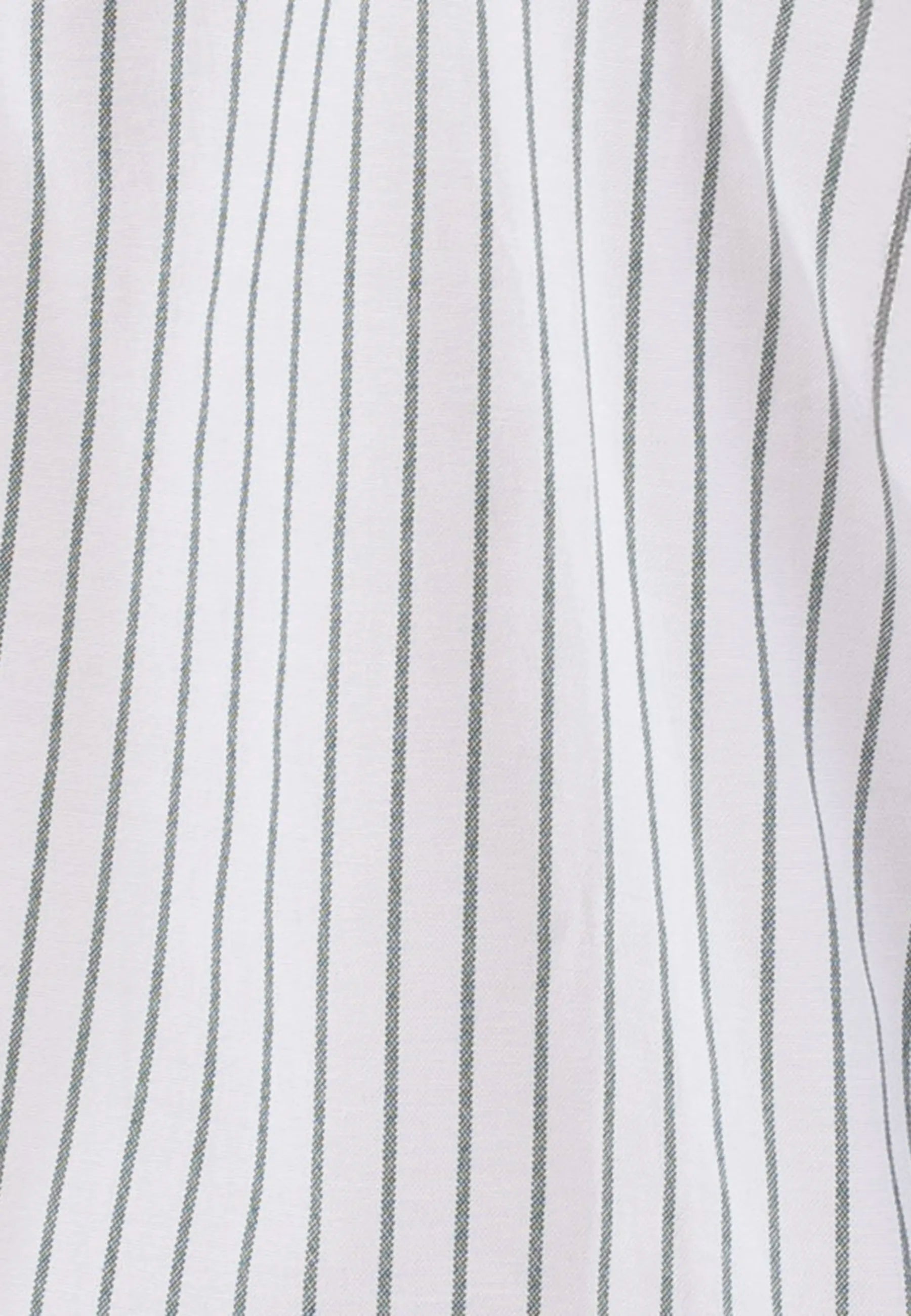
General Care guide
Leather is a collective term for various types of hides and skins. It ages beautifully over time, developing a unique patina. With its natural flexibility, breathability, and high resistance to wear, leather is both durable and timeless.
Color
Sorting your laundry by color is an effective way to keep your textiles fresh and vibrant for longer. Wash dark garments with other darks, colored clothes with other colors, and keep white garments separate. For extra delicate fabrics such as silk or wool, separate them and wash gently.
Temperature
To extend the lifespan of your clothes, make 30°C your standard washing temperature and use higher temperatures only for dirty or durable garments.
Here are some simple guidelines for washing at the right temperature:
- 30°C – perfect for most garments without stubborn stains
- 40°C – for dirtier garments made from durable fabrics such as cotton
- 60°C – for bed linen, tablecloths, and towels that require a more thorough cleaning
Remember: always check the care label for specific instructions, as some garments may require special care.
Hand Washing
For delicate materials such as silk, cashmere, merino wool, or fine knits, hand washing is a much gentler option. Use a detergent designed for delicates or specifically for the material you are washing. Always check the care label for specific washing instructions before you begin.
Drying
There are different ways to dry your laundry, and some methods are gentler than others. Here are the three most common drying methods:
Hang Drying
To preserve both the quality and shape of garments, let them dry slowly on a drying rack or hanger. Make sure to smooth out any creases to make steaming easier later.
Flat Drying
Knitted garments should be dried lying flat to maintain their shape. Place the garment on a towel, roll it up, and gently press out excess water. Then lay it flat to dry. If using a drying rack, place a towel underneath the garment to prevent creases from forming.
Tumble Drying
Tumble drying can shrink and damage clothing and is not the most energy-efficient method. Avoid tumble drying most garments. If you must tumble dry, use dryer balls to reduce drying time and minimize static electricity.
Steamer
Using a steamer has several benefits. The warm steam not only helps smooth out wrinkles but also removes unpleasant odors and bacteria. By steaming your clothes, you won’t need to wash them as often, which reduces wear and tear — especially on delicate textiles such as silk, velvet, and cashmere. A steamer is also a great tool when traveling, as it quickly refreshes your garments without the need for an ironing board or iron.
Iron
An iron is a traditional tool for removing wrinkles and creases from garments. To get a wrinkle-free result, you need to use a spray bottle with water or a steam iron with a built-in steam function. The downside of ironing is that it can press down the fibers, making the fabric appear flat. When ironing delicate materials, you must be careful, as the hot surface can leave scorch marks on the garment.
Removing Wrinkles
Both a steamer and an iron are effective for making clothes wrinkle-free, but steaming is the gentler option. The warm steam lifts the textile fibers and allows them to swell instead of pressing them down, helping garments regain their natural shape. Steaming is also a safe way to remove wrinkles from delicate garments without risking damage.
Steaming Against Odors
Many believe you need to wash a garment to remove bad odors, but that’s not always the case. Many smells can be reduced or even removed by airing your clothes outdoors. Another effective option is using a steamer, as the hot steam kills bacteria and refreshes the garments. A fabric spray can also be a quick solution to make the garment smell pleasant.
Acting quickly and treating the stain immediately is the key to successful stain removal. It’s important, however, to use the right method for each type of stain. By identifying the source of the stain and following specific treatment guidelines, you can effectively remove it without damaging the fabric.
Wine
The most effective way to remove wine stains is to use a stain remover containing hydrogen peroxide. Treat the stain as quickly as possible for the best results. If you don’t have stain remover on hand, sprinkle salt over the stain to absorb the moisture for a few minutes, then rinse with warm water. For older wine stains, you can try using whole milk — bring it to a boil, dip the stained area into the milk, let it sit until the milk cools, and then wash the garment.
Grease
To remove grease- and oil-based stains, first blot up as much oil as possible with a paper towel. Then sprinkle potato starch over the stain and let it absorb overnight. Brush off the starch, soak the garment in warm water, and then wash as usual with an appropriate detergent for best results.
Grass Stains
Grass stains can be difficult to remove, as chlorophyll and moisture penetrate deep into textile fibers and can create permanent marks. To remove grass stains, use alcohol, a hydrogen peroxide–based stain remover, or a gel made from gall soap and sunflower oil. Soak the stain in your chosen solution, let it sit for a while, then wash the garment for best results.
Deodorant
To remove deodorant stains from your garment, mix detergent with citric acid and apply directly to the stain. Let it sit for 30 minutes, then rinse with cold water. Another trick is to use vinegar — mix one part vinegar with ten parts water, let the garment soak for a few hours, then wash as usual with a suitable detergent.
Makeup
To remove makeup stains, mix detergent with baking soda and apply the mixture to the stain using a clean makeup brush. Let it sit for 15 minutes, then wash the garment as usual.
Care Tips
Pilling can quickly ruin the appearance of your clothes, but there are simple ways to remove it. An electric fabric shaver is an effective tool for quickly removing pills from garments. A clothes brush or pill brush — a soft-bristled brush — can also help remove pilling. A lint roller can be useful for picking up smaller pills.
Quick Questions About Pilling
What is pilling and why does it occur on clothes?
Pilling refers to small balls or knots that form on the surface of clothes when fibers are exposed to friction and loosen. This most often happens in areas that experience a lot of movement, such as elbows, knees, or where garments rub against each other.
How can you prevent pilling on clothes?
To prevent pilling, wash clothes on a gentle cycle, preferably inside a laundry bag, and avoid overloading the washing machine. Avoid high heat when drying and use a lower spin speed to further reduce the risk of pilling.
What should you keep in mind when storing clothes to reduce pilling?
To minimize pilling, store clothes in a cool, dry place and avoid contact with rough surfaces or other garments that can cause friction. Hanging or folding clothes neatly can also help prevent them from rubbing against each other.


